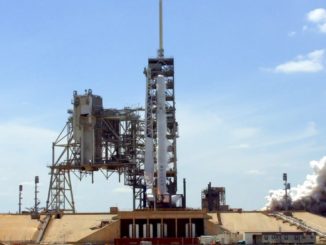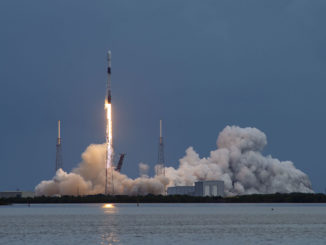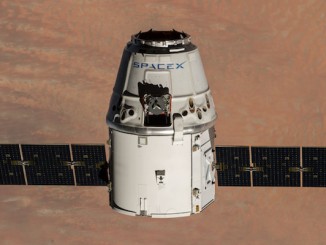SpaceX has released another jaw-dropping video from a camera fastened to a piece of a Falcon 9 rocket’s payload fairing, showing the nose cone spinning through space after its separation on a recent launch.
The on-board video likely came from a satellite launch earlier this year. SpaceX did not disclose which mission produced the stunning footage.
Beachcombers on an island in the Bahamas found fragments of a Falcon 9 fairing washed up on a beach, and South Carolina businessman Kevin Eicrhelberger tweeted pictures of the discovery May 29. Eicrhelberger and his colleagues found GoPro cameras among the debris and turned over the cameras and data cards to SpaceX.
The video posted to YouTube on Friday is from a GoPro camera that was attached to the fairing, but SpaceX did not confirm whether the imagery came from the wreckage found in the Bahamas.
Responding to Eicrhelberger on Twitter, Musk hinted that SpaceX is looking into reusing the fairings.
The nose shroud shields satellites during final preflight preparations and the early stages of launch. Once the rocket reaches space — an altitude above 100 kilometers, or 62 miles — it jettisons the payload fairing to fall back into the ocean.
This may be as close as I get to my lifelong dream of visiting space (hopefully not though) via @SpaceX @elonmusk pic.twitter.com/AgLsH74kN7
— Kevin Eichelberger (@kpe) May 29, 2015
The Falcon 9’s 17-foot (5.2-meter) diameter fairing is released in two halves like a clamshell. The rocket does not use the shroud when it launches Dragon cargo missions to the International Space Station.
SpaceX is already working on the recovery of a Falcon 9 first stage booster as the first step to making the rocket at least partially reusable.
Rocket debris occasionally washes ashore months after launching.
Fragments from the lightweight payload fairings are found most often. Bulkier components from rocket boosters often sink after impact in the ocean.
Recent finds include a parts of payload shrouds from Atlas 5 rockets that ended up on beaches in Bermuda and the Bahamas. Debris from Ariane 5 and Soyuz rockets launched from French Guiana on the northeastern coast of South America have been found in Trinidad, Brazil and Corpus Christi, Texas.
Russian and Chinese rockets drop debris on sparsely-populated land downrange from their launch bases.
Email the author.
Follow Stephen Clark on Twitter: @StephenClark1.



